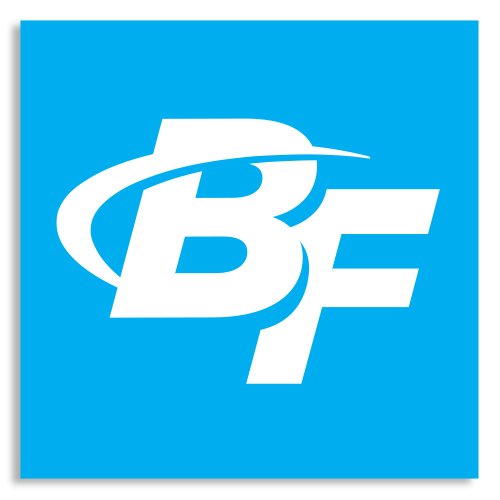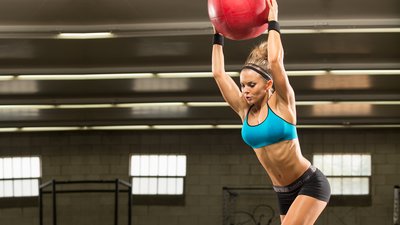Maybe it's just me, but doing ab work pretty much sucks.
Of course, there's the fact that it often burns to a degree that surpasses almost anything else we do in the gym. But it also feels like many lifters do it for purely superficial reasons. If that's your motivation, go for it. However, I've always felt better about what I'm doing if I train for functionality and strength—and simply end up with a great physique as a bonus.
As a coach, I also can't escape the belief that training for performance will give you better abs than pretty much any isolated ab work. After all, the best ab drills are actually whole-body movements that have much greater potential to lower your body-fat levels, which is what you need to do if you ever want to see your abs in the first place. And the "traditional" tried-and-true ab drills, like sit-ups and crunches, aren't that easy on your back at the end of the day.
It may sound like I'm about to tell you to earn your abs with heavy deads and squats, but I'm not. Instead, I'm going to command you to prioritize better ab training, and do it right. Pick two of these seven drills, and do each of them once a week in separate workouts. Switch to two different moves every month.
That's your assignment. Now here are the drills.
1. Roll-Out Variations
The ab wheel rules here. You can also substitute a loaded barbell or an exercise ball. The easiest version would be rolling out on a ball from your knees, and the hardest version is done with a wheel from a standing position.
Roll-outs also provide a huge upper-body training stimulus, especially for the lats and long triceps head, in addition to the core training benefits.
Be aware that your lumbar spine will have a strong tendency to hyperextend or sag as you reach the end of the stroke. To counter this error, tuck your tail as you roll out.
Here are three great roll-out progression videos from Eric Cressey that outline the fine points of roll-outs in great detail.
2. Toes to Bar
We can all thank our friends in CrossFit for popularizing this great drill. Like roll-outs, this exercise can be scaled to almost any level of ability. The easiest version is to use bent knees in both directions. The next step is to use bent knees on the way up and straight legs on the way down. The final and most difficult version is straight legs in both directions. From there, you can even add a med ball between your feet, if needed.
Aside from the amazing lat- and core-strengthening benefits, toes to bar also serves as a great hamstring-lengthening drill if you strive to maintain a neutral lumbar spine as you do it. Avoid bending your elbows as much as possible, and feel free to use straps.
Here's a really nice video tutorial that outlines the bent-knee versus the straight-leg versions of the exercise:
3. The Palloff Press
A key function of the core muscles is their ability to prevent unwanted motion in the spine as your extremities do their thing. The Palloff press trains your core muscles in spades. You can perform this drill from a standing or kneeling position, and you can use elastic tubing or a cable unit. As you extend and retract your arms, your abdominal muscles will struggle big time as they fight to maintain your position against the resistance. It's truly a "whole body" exercise.
Here's my colleague, Tony Gentilcore, showing you how it's done:

4. Single-Arm Farmer's Walk
While the Palloff press is an antirotation exercise, the single-arm farmer's walk is an antiflexion movement. This means that as you walk, a number of your core muscles will work to prevent you from toppling over. Many lifters underestimate the truly crippling levels of soreness this movement can generate, so take it easy on your first few tries.
You can use a heavy dumbbell or kettlebell, but I prefer a short barbell, since it's less likely to smash into your leg as you walk.
Also, strap up. There are far better ways to train your grip.
Here's the great coach, Dan John, teaching this exercise:
5. Medicine-Ball Slams
Medicine balls are perhaps the most underappreciated—and hence under-utilized—tool for abdominal training. Because you're throwing something, there's a built-in athletic-development component that adds to the enjoyment of doing these drills.
One of my favorite medicine-ball drills is the floor slam. Pick up the ball with both hands, reach up over your head, and aggressively slam the ball into the floor directly in front of your feet. This explosive movement places strong demands on your abdominal muscles, and also your lats and hip flexors.
Note: you'll need a durable ball with little to no bounce for this drill (a sandbag can work well also).
Here's a nice video from my friends at Critical Bench:
6. Reverse Trunk Twist on Ball
This is a great oblique-training and rotational-power exercise, but it takes a bit of skill and patience. Position an inflatable gym ball between two uprights, such as in a squat cage. Grab the uprights, and with your back positioned on the ball, "pendulum" your legs to the right and left, keeping a 90-degree angle between your legs and torso.
Trust me, you'll feel the burn, and if you happen to play a sport with a rotational component (discus, hammer, punching, etc.), you'll be amazed at what this drill can do for your ability to transfer power from your legs to your upper extremities.
Here's yours truly showing you how to do it:
7. Stir the Pot
This last exercise is probably the most difficult one. Starting in a plank position with your forearms on an exercise ball, draw circles on the ball as you strive to maintain your stability. The bigger the circles, the more difficult the exercise is.
Here's the great Dr. Stuart McGill showing you how it's done (the stir the pot starts at 4:45, but the entire video is well worth viewing):
There's certainly a place for isolation exercises within the context of a well-designed training program. However, the more "global" drills I've presented here are more fun to do, more specific to serious training and lifting, and a lot easier on your back.

